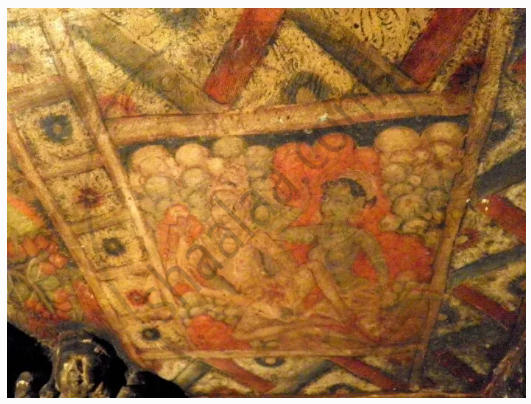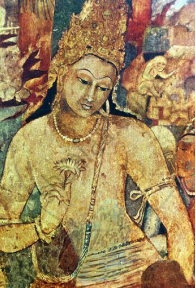Topics
Historiography : Development in the West
History : Applied History
Working of the Constitution
Historiography : Indian Tradition
The Electoral Process
Political Science : Working of the Indian Constitution
Applied History
Political Parties
History of Indian Arts
- What is ‘Art’?
- Indian Traditions of Visual Arts (Drik Kala): Painting
- Prehistoric Paintings
- Mural Paintings and Cave Painting
- Folk Styles of Paintings
- Classical Styles of Painting
- Miniature Paintings in Manuscripts
- Modern Indian Paintings
- Indian Traditions of Visual Arts (Drik Kala): Sculpture Art
- Indus Civilization Sculpture
- Folk Styles of Sculptural Art
- Classical Styles of Sculptural Art
- Indian Iconography
- Indian Traditions of Visual Arts (Drik Kala): Architecture and Sculpture
- Rock-cut Architecture
- Temple Architecture
- Indo-Islamic Architecture
- Indo-Gothic architecture
- Indian Traditions of Performing Arts
- Indian Theatre
- Indian Music
- Indian Dance
- Present Scenario of the Performing Arts
- Art, Applied Art, and Professional Opportunities
Social and Political Movements
- Movement
- Important Movements in India
- Tribal Movement
- Farmers Movement
- Worker's Movements
- Women’s Movement
- Environment Movements
- Consumer Movement
Mass Media and History
Challenges Faced by Indian Democracy
Entertainment and History
Sports and History
Tourism and History
Heritage Management
History - Imperialism
History - 20th Century Age of conflict
History - Emancipation of Asia and Africa
History - World after World War 2
Political Science
Geographical discoveries and colonization
- Concept for Geographical Discoveries and Colonization
Africa
- Imperialism - Africa
Asia: India, China, Japan
- Concept for Asia: India, China, Japan
Dictatorships in Europe, Second World War and world
- Concept on Dictatorships in Europe
- Concept for Second World War and World
First world war
- Concept on First World War
The League of Nations
- Concept for the League of Nations
Russian Revolution
- Concept for Russian Revolution
United Nations Organization
- Concept for United Nations Organization
Africa
- Emancipation of Africa
Asia
- Emancipation of Asia
Globalization
- Globalization After World War II
Scientific and Technological Progress
- Scientific and Technological Progress After World War II
Cold war
- Formation of the Cold War
Social Diversity and Democracy
- Social Diversity
- Coccept for Caste/Race and Democracy
- Concept for Language and Democracy
- Cocnept for Religion and Democracy
- Concept for Gender and Democracy
- Concept for Democracy and Diversity
Challenges to Democracy Remedial Measures to the Challenges
- Concept for Challenges to Democracy Remedial Measures to the Challenges
Internal work
Democracy
- Democracy - Meaning, Types and Characteristics
Political Parties and Types
- Political Parties
- Importance of Political Parties
- Major National and Regional Parties in India/ Types of Political Parties
Notes
Mural Paintings and Cave Painting:
- A mural is a large painting that is painted or affixed directly on walls and rock surfaces like roofs and sides. More broadly, mural art also appears on ceilings or any other large permanent surface.
- Mural paintings usually have the distinguishing characteristic of having the architectural elements of the space they are painted on harmoniously incorporated into the picture by the common technique of fresco.
- Mural paintings have existed in India from the 2nd century BC to the 8-10th century AD.
- Mrunal paintings can be found in Ajanta, Bagh, Sittanavasal, Armamalai cave, Ravan Chhaya rock shelter, and Kailashnath temple in Ellora caves.
- The majority of the themes in these paintings are religious in nature, including Buddhism, Jainism, and Hinduism.
1. Ajanta Caves:
|
Padmapani painting in Ajanta cave, Maharashtra |
- In the 4th century AD, the Ajanta caves were carved out of volcanic rocks.
- Human values and social fabric are depicted in the paintings, as are period styles, clothing, and accessories.
- The female figures in the paintings are distinguished by their distinct hairstyles.
- These paintings' themes range from Jataka stories to Buddha's life to intricate flora and fauna decorative patterns.
- The painting medium was made up of vegetable and mineral dyes.
2. Ellora Caves:
 Mural painting in cave no 32 at Ellora |
- Excavated between the 8th and 10th centuries A.D. from the living rock
- The artworks depict all three religions (Buddhism, Jainism, and Hinduism).
- Ellora is a group of 34 caves – 17 Brahmanical, 12 Buddhist, and 5 Jain located in the Sahyadri ranges of Maharashtra.
- The most famous of which is the Kailasa temple which is a free-standing monolith structure that has several fragments of painting on the ceiling of the different parts of this temple.
If you would like to contribute notes or other learning material, please submit them using the button below.

